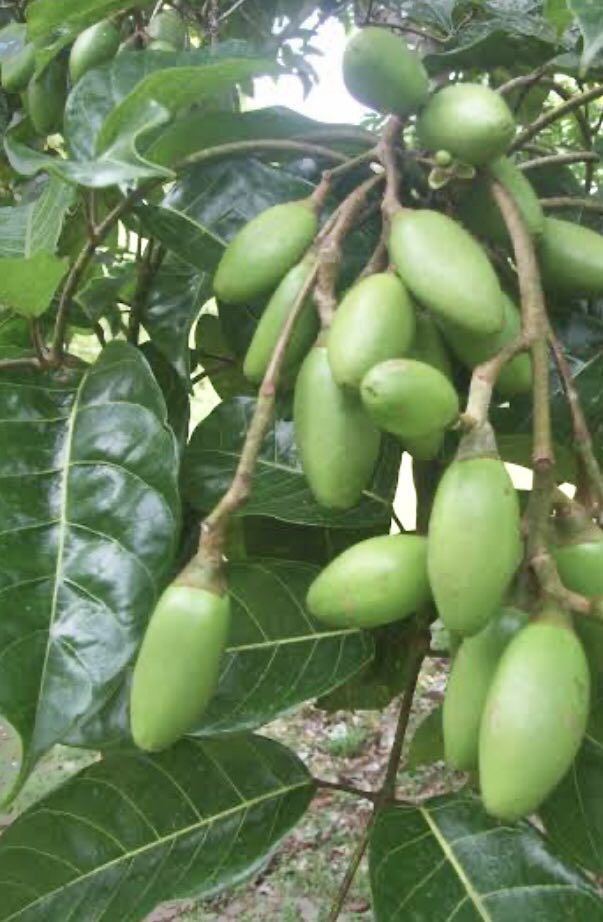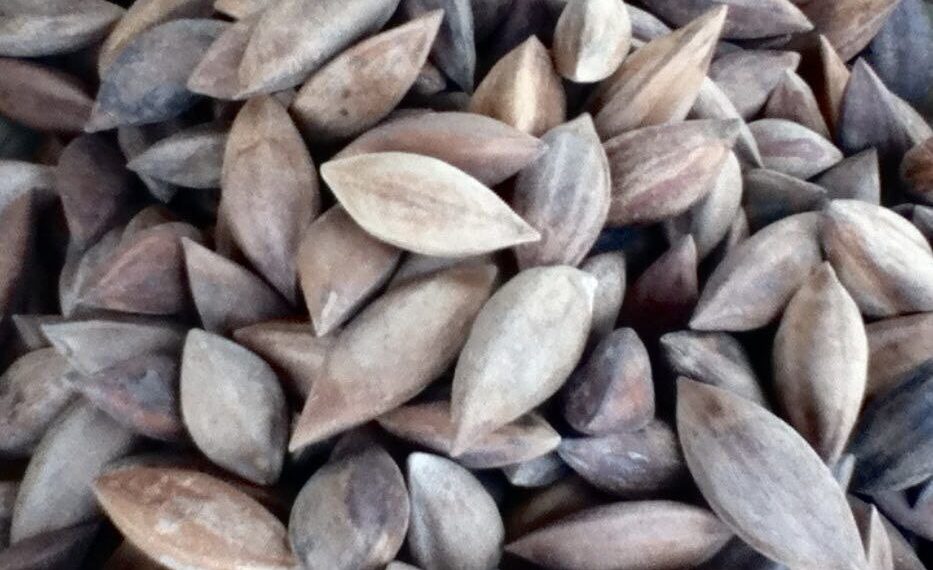Aside from the majestic Mount Mayon, the Bicol region is also famous for its pili (canarium ovatum) tree. The pili, an important endemic tree not only in Bicol but also in some parts of the Philippines, has many uses. Its resin-like wood and the nut shells are being harvested and used as firewood to cook food. There is also the aromatic Virgin Pili Oil, used mainly for cosmetics but is also good for salads. The pili oil is extracted from the whole nut using very low heat. The sap of the pili tree, on the other hand, is used as incense in religious and other church rituals.
The pili may be eaten in various ways. Its nut kernel, green and still raw, is delicious and particularly sweet. But when the skin turns black, the fruit is ripe and ready to be blanched, which the Bicolanos or the people from Bicol, call tinolang pili. The skin of the pili is usually peeled, and the tinolang pili‘s creamy flesh is consumed as a side dish dipped in patis bicol. Blanched pili is also eaten as a dessert. Just roll the pili flesh in sugar and voila, a delightful pamutat or sweet dish!

When all is left is the pili nuts, they are put in a a round, flat-shaped rice winnower or bilao to dry. Then they are cracked to extract the kernels, after which the brown skins slid off easily and are eaten as is. Pili nuts are considered to be a healthy food with nutrients and vitamins that help address some minor health problems such as cholesterol.
Now, the sweet part of it all. The pili candies that we all love come from plantations, where the fallen nuts are gathered after their flesh has decayed. Unshelled nuts, however, are sold by the hundreds and will be kept until they are cracked. These cracked nuts are sold by the kilo for processing. They must be blanched first in hot water to remove their skins in preparation for processing into various kinds of sweets — pili candies, tarts, pastries, caramelized nuts, bonbones, crisps, pastillas, mazapan, biscotti, and many more! Pili nuts are also incorporated in soups, stew, noodles, cakes, and ice cream to have that creamy, distinct flavor.
Come, let’s have some pili. Yum!
































